Can the European beech assist us in mitigating the effects of climate change?
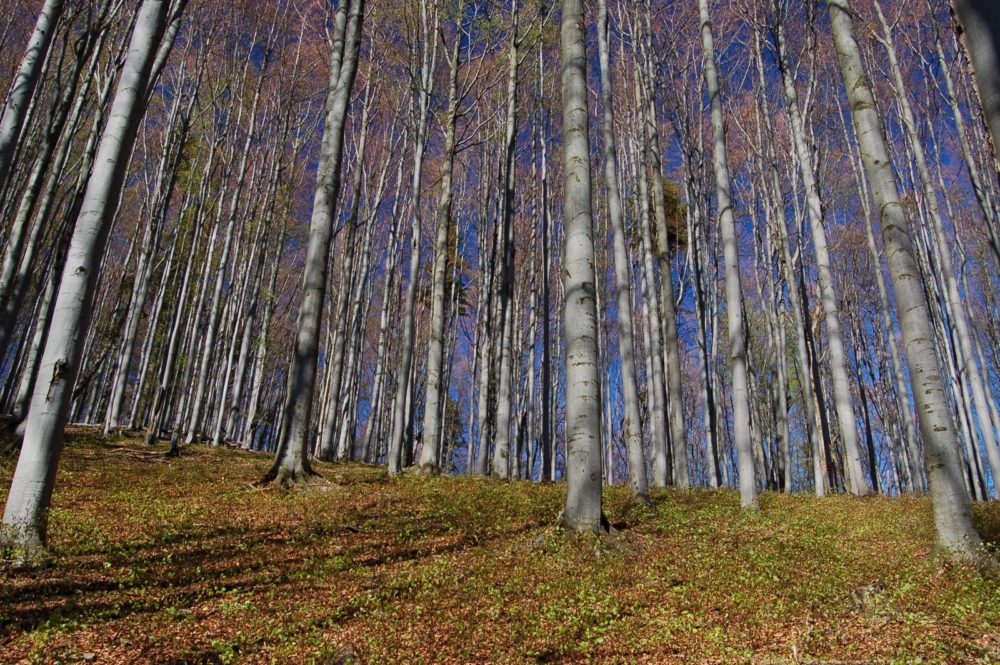 Ecosystems worldwide are currently facing a growing number of challenges due to the ongoing climate change. The most notable effects include a rise in average air temperatures and a shift in precipitation patterns during the growing season. These changes have had a negative impact, particularly in areas experiencing intense summer rainfall, leading to the widespread death of forest stands and a subsequent decline in the range of ecosystem services provided.
Ecosystems worldwide are currently facing a growing number of challenges due to the ongoing climate change. The most notable effects include a rise in average air temperatures and a shift in precipitation patterns during the growing season. These changes have had a negative impact, particularly in areas experiencing intense summer rainfall, leading to the widespread death of forest stands and a subsequent decline in the range of ecosystem services provided.
Photo: European beech monoculture with natural regeneration, author Jan Řezáč
According to the climate forecasts for Central Europe, there is a growing trend of increasing air temperatures. This trend could lead to an increase in the frequency and duration of intense summer rains. Climate change has already caused the average annual air temperature in the Czech Republic to rise by 2°C between 1961 and 2021 (ČHMÚ, 2022). It is estimated that by 2047, temperatures in southern and central Europe may rise by an additional 2°C due to climate change.
One tree species that holds great promise is the European beech. To shed more light on the beech’s ability to adapt to changing environmental conditions, scientists from FGMRI (VÚLHM, v. v. i.) and Mendel University in Brno collaborated on the paper titled Význam buku lesního ve střední Evropě v období klimatické změny (The signifikance of European beech in Central Europe in the period of climate change). Their aim was to provide a comprehensive overview of what is known so far about adaptation strategies of European beech.
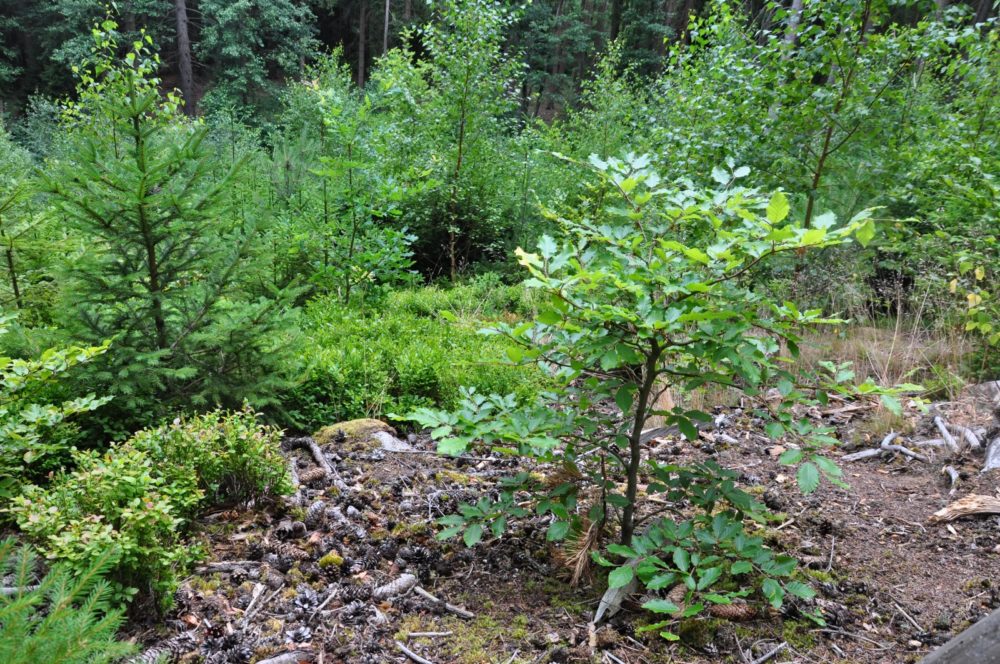 Photo: Artificial regeneration of European beech in varied mixture of tree species, author Jan Řezáč
Photo: Artificial regeneration of European beech in varied mixture of tree species, author Jan Řezáč
European beech, as a dominant and ecologically significant deciduous tree species, faces significant challenges in the changing environment. Climate change (increase in average air temperatures, change in rainfall distribution) not only affects its growth, renewal, and distribution area but also causes more frequent pressure from biotic pests (e.g. insect pests). Beech adaptations to these changes, together with management strategies that support these adaptations, are essential for its conservation and sustainable use.
European beech is a type of tree that prefers shaded areas and can thrive in various locations. It can grow under the canopy of other vegetation, even with very little exposure to sunlight, as low as 5% of what an open area would receive. This allows the beech tree to be highly competitive compared to other trees, as it is one of the few deciduous trees that can survive and grow in extreme low-light conditions.
European beech is very well and easily naturally rejuvenated thanks to the up to 20m effective lateral distance of the seeds, when even a relatively low intensity of diffuse radiation is sufficient for the beech’s natural renewal.
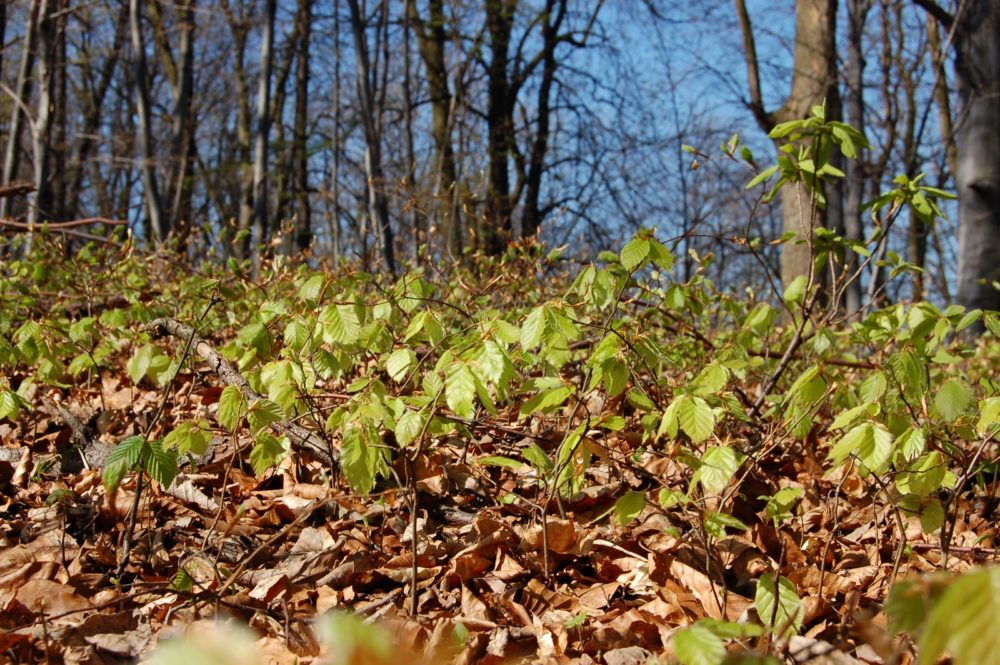 Photo: Natural regeneration of European beech, author Jan Řezáč
Photo: Natural regeneration of European beech, author Jan Řezáč
The natural regeneration of European beech is heavily influenced by birds that consume them. Both forest and garden species of birds, including the great spotted woodpecker, great tit, coal tit, wood nuthatch, Eurasian jay, and common chaffinch, play a crucial role in this process. Additionally, beech trees are frequently sought after by various rodents, such as squirrels, voles, mice, and dormice.
From 2018 to 2020, Central Europe was hit by intense heat and drought, which had a severe impact on forest ecosystems. The availability of water is the primary factor that limits the health and productivity of forest tree species, especially of European beech. Additionally, drought not only affects the physiological processes of trees but also reduces the availability of nutrients in the soil, which can negatively impact the competitiveness of beech trees.
European beech stands are experiencing early leaf fall, as well as a reduction in thickness and height growth. This can result in a loss of the assimilation apparatus which is crucial for photosynthesis. Consequently, the tree does not receive the necessary storage substances (such as saccharides, lipids, proteins, and secondary metabolites) which may lead to starvation and a subsequent loss of productivity.
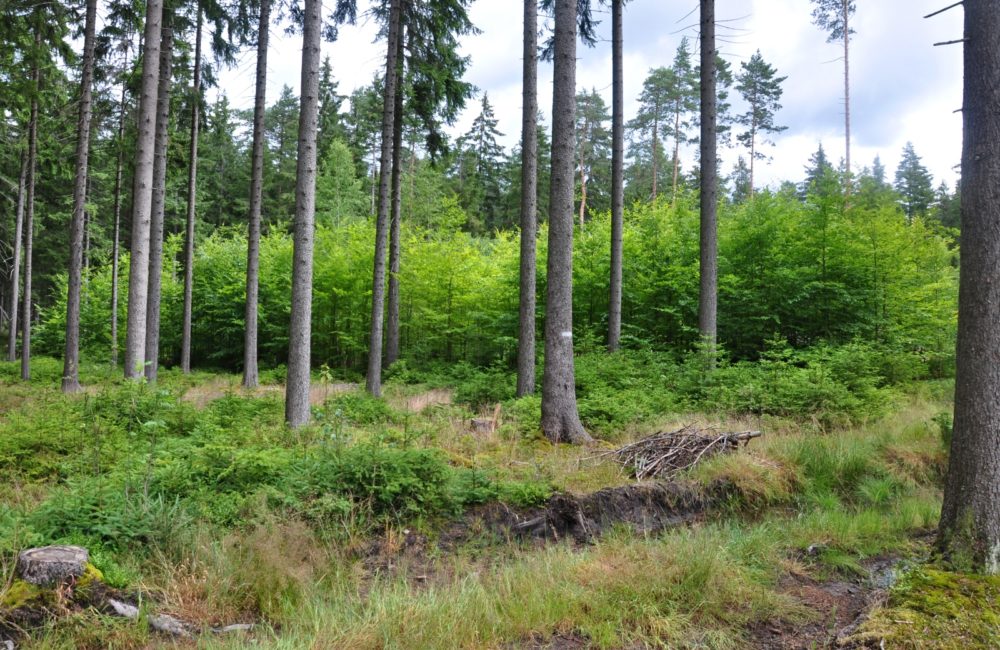 Photo: Gap of European beech in Norway spruce forest stand, author Jan Řezáč
Photo: Gap of European beech in Norway spruce forest stand, author Jan Řezáč
Compared to other broadleaved tree species (e.g. oak, hornbeam, ash, linden), European beech is less resistant to drought stress, because the lower water supply in the soil in particular increases the sensitivity of its growth to the climate. It is proven that an increase in air temperatures by 1.5 °C will cause a decrease in beech growth by 20-40%, which can also be amplified up to a 50% decrease in the case of low rainfall.
European beech is most vulnerable to fungus at the start of the growing season. Even a short exposure to the fungus can result in early leaf fall. The drying of European beech tree crowns is not limited to the year of drought, but can continue for up to 15 years, weakening the trees over time. Young plantings and seedlings are particularly susceptible to late spring frosts, which can damage flowers and newly sprouted leaves.
It is essential to address the appropriate adaptation strategy due to the current and future problems faced by European beech.
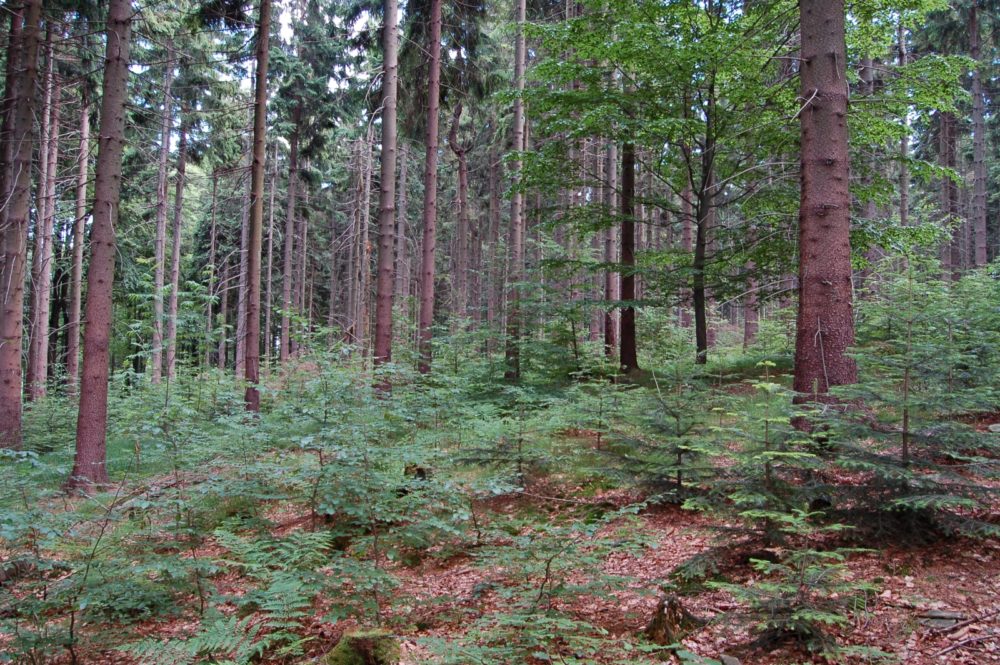 Photo: Natural regeneration of European beech and silver fir under Norway spruce, author Jan Řezáč
Photo: Natural regeneration of European beech and silver fir under Norway spruce, author Jan Řezáč
Growing European beech in mixed stands is a useful adaptation measure for enhancing volume production, mitigating the adverse effects of drought and other risks, and making more efficient use of resources, particularly light and water. It also helps to maintain the stability of the stands amidst the ongoing global climate change.
Silviculture measures for European beech, when mixed with trees like oak or maple, appear to be the most effective adaptation strategy for not only increasing volume production, but also for maintaining beech in lower positions. A mixture of European beech and Norway spruce is also a suitable choice, as they have different ecological requirements and root system morphology, which results in better utilization of nutrients and water in the soil.
It is possible to grow European beech in a way that creates diverse and structurally rich forests. This can help mitigate the negative effects of climate change, as understory trees in these forests are often better able to cope with increased air temperatures. However, trees that have to compete with other plants for resources may become more vulnerable to drought in the future. Therefore, it is important to manage beech forests carefully in order to ensure that they continue to thrive in a changing climate.
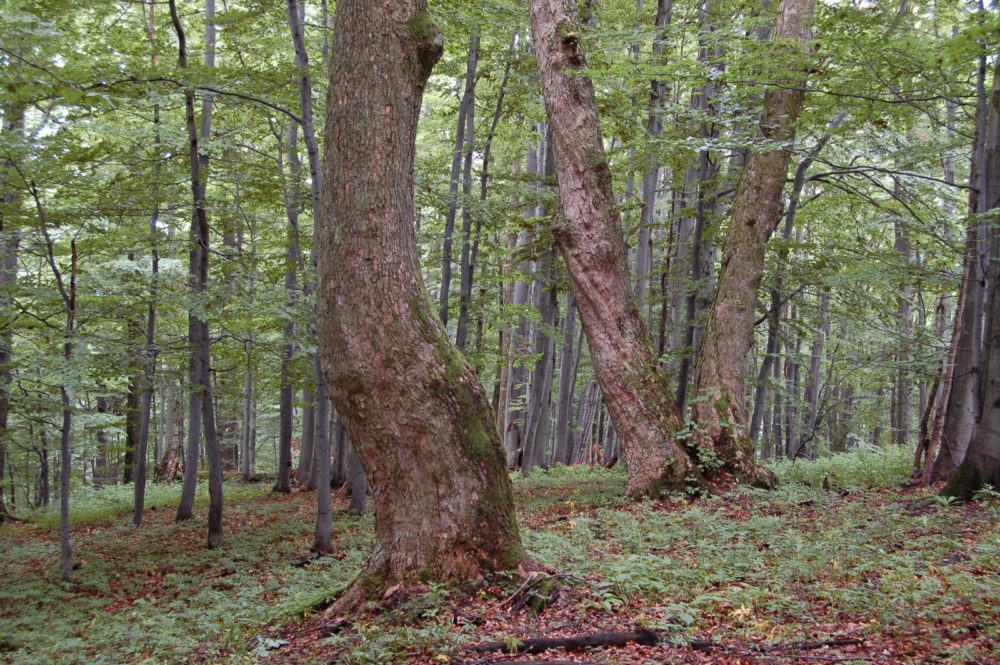 Photo: European beech forest stand with sycamore maple, author Jan Řezáč
Photo: European beech forest stand with sycamore maple, author Jan Řezáč
The beech individuals in the mixture have a wider crown, and thus make better use of the crown space compared to monocultures. Mixed beech stands thus achieve a higher number of trees, a
Silviculture practices that involve close-to-nature methods with an emphasis on vertical and horizontal differentiation are highly suitable for European beech and mixed stands with this tree species, too. Research focused on the genetic diversity and adaptability of European beech, combined with efficient management of mixed forest stands, can help ensure sustainable and safe production of beech while also strengthening its adaptation and sustainable use.
The paper Význam buku lesního ve střední Evropě v období klimatické změny (The signifikance of European beech in Central Europe in the period of climate change: An Overview of current knowledge) can be downloaded here.
Authors of paper: Jakub Černý, Ondřej Špulák, VÚLHM, v. v. i., VS Opočno; e-mail: cerny@vulhmop.cz; Petr Sýkora, Kateřina Novosadová, Jiří Kadlec, Martin Kománek, Mendelova univerzita v Brně
According the original prepared by: Ing. Jan Řezáč, VÚLHM, v. v. i., e-mail: rezac@vulhm.cz
